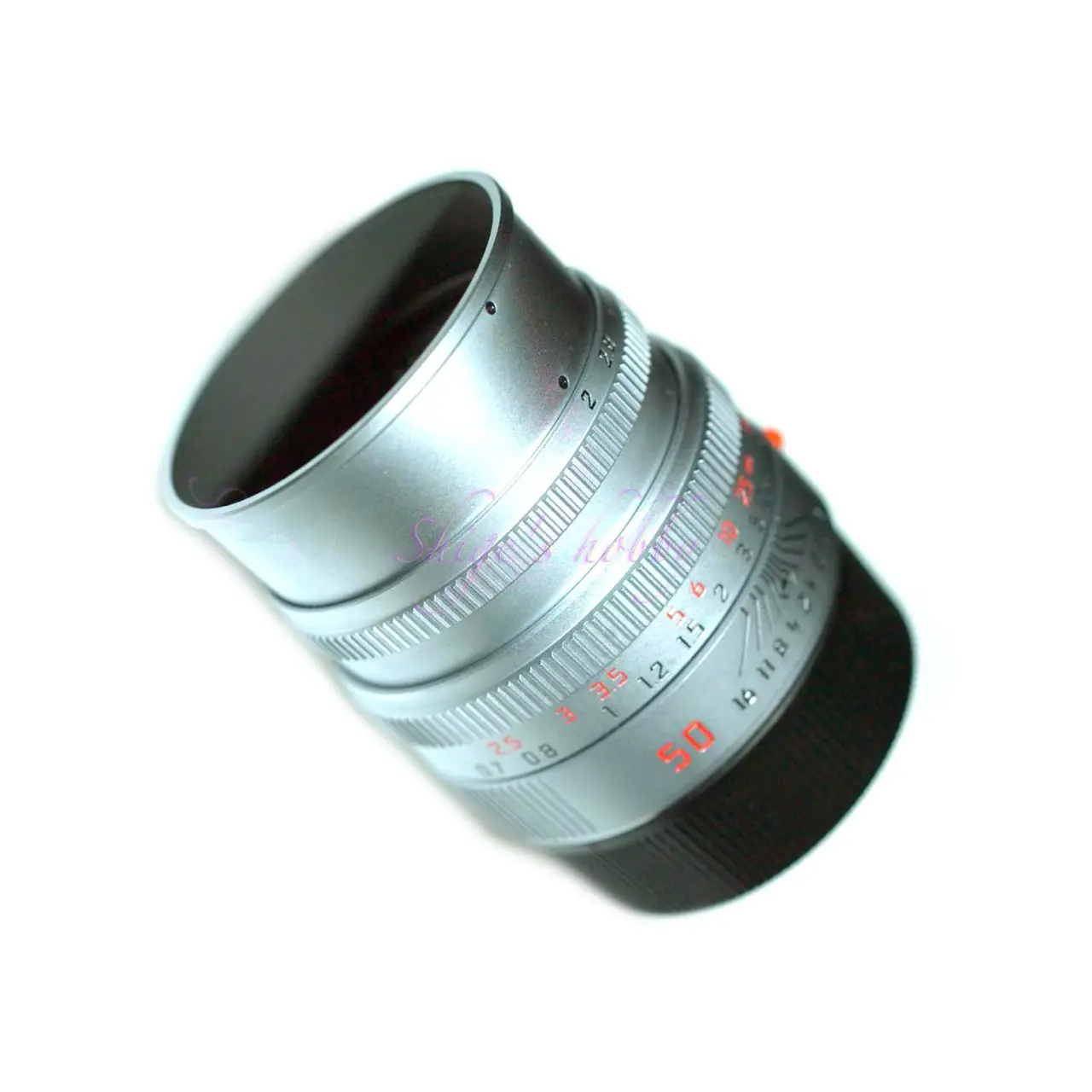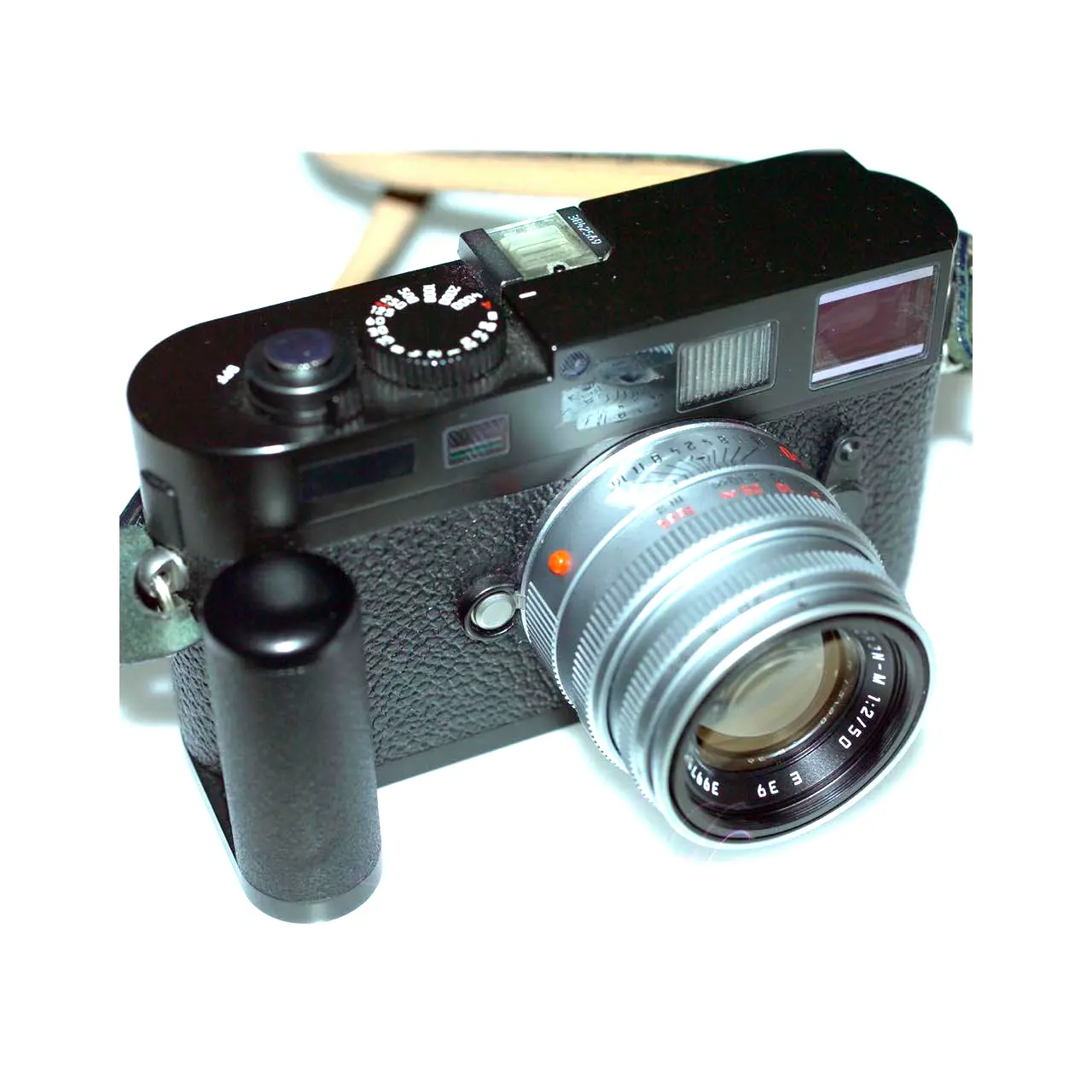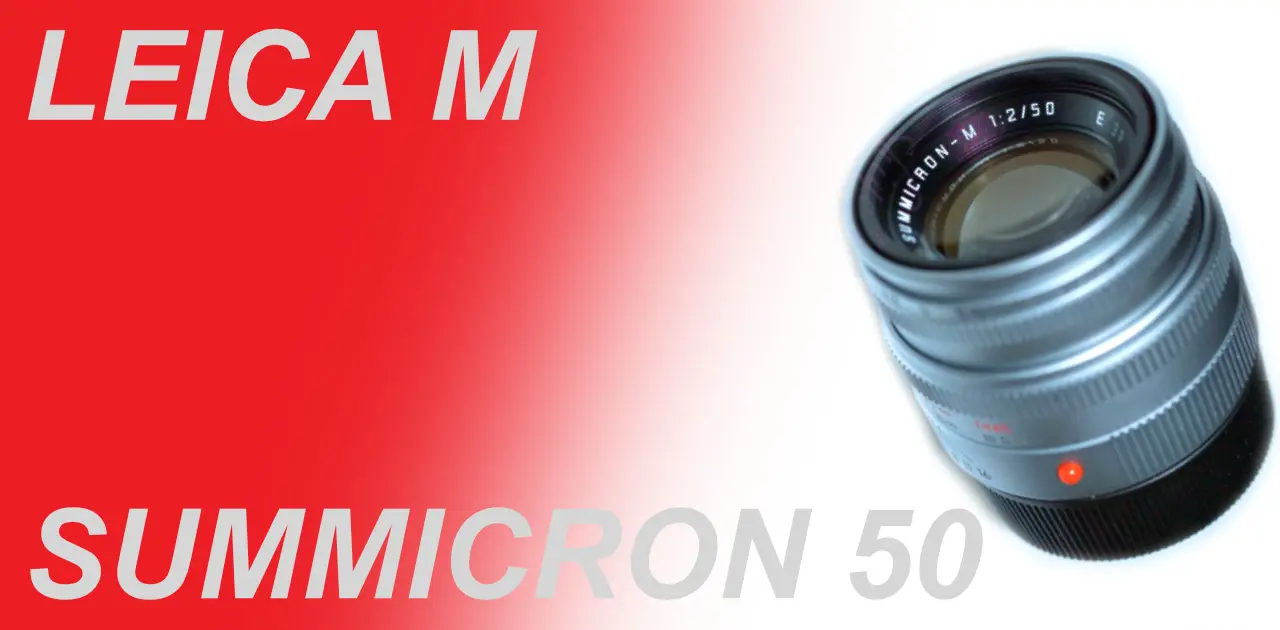Last updated on 2025-05-06
A review and Photo example of the Summicron M 50mm build in hood.
Table of contents
Gallery
- Sample photo taken with the Leica M9.
Review


1.Overview
The Summicron-M 50mm was released in 1979 with an old lens barrel, and the barrel shape was renewed to its current form in 1994, and the lens configuration has remained the same since 1979. It is a long-lived lens, with over 100,000 units produced, including the old and new barrels.
The aperture blades are 8 blades in the usual octagonal shape, and the hood is a retractable type with no locking mechanism. The filter diameter is 39mm, and the thread diameter has remained unchanged from the previous Summicron 50mm.
Similar to the Summicron-M 35mm ASPH., Summilux-M 50mm, and APO Summicron 90mm, it was available in three colors: black, silver, and titanium. The titanium and silver colors use brass barrels, and are heavier than the black aluminum barrel.
The Summicron 50mm with built-in hood is also available in a silver barrel with an L39 screw mount version for the Barnack Leica, but the minimum shooting distance is 1.0m, which matches the standard minimum shooting distance of the Barnack Leica. By using an L/M conversion ring, it can be used with M-mount Leica cameras, but care must be taken as you can only get as close as 1m.
2.Usage
I have used the early retractable Summicron, the Summicron with glasses, and this one with a built-in hood for the M-summicron. There were almost no scenes where I was dissatisfied with the image quality, and I feel that the Summicron series is a complete lens compared to the 50mm lenses before the Summicron. For this reason, I have not yet acquired any of the lenses released between the first and this lens.
The brightness of the maximum aperture of F2 makes it easy to determine the focus position with the rangefinder of the M-series Leica, and in casual use such as snapshot photography, the focus position does not go against your intention so much, making it easy to use unlike the Summilux 50mm ASPH., which requires razor-sharp focus accuracy.
The aperture ring is located at the front of the lens and the focus ring is located in the middle, so photographers who are used to Summicrons will not be confused. However, the lens barrel no longer has the finger rest that was present in the second and third generations, so photographers who use the finger rest as the starting point may be confused.
The two Summicrons with built-in hoods that I have used had light focus rings for manual focus lenses. These were lenses that were not too worn out, so I think the focus ring is designed to be light.
3.Summary
In conclusion, to sum up the Summicron-M 50mm built-in hood, it is a long-lived lens that has maintained the traditional lens configuration while changing the lens barrel and lens coating.
As a standard lens, it is a complete lens, and I have no complaints about using it, but it is a lens that lacks excitement.
Evolution of SUMMIRON M
There are two ways to classify the generation count of Summicrons: by changes in the lens barrel, and by changes in the lens configuration. This lens is either the 4th generation-4th or the 5th generation-5th.
The Ken Rockwell site in the reference link classifies it by changes in the lens barrel, so it is 5th generation-5th-type5, while the LEICA WIKI classifies it by changes in the lens configuration, so it is classified into 4 types.
I personally recognized this lens as the 4th generation-4th-type4, but since the classification is different for each person and it may be misleading, I call it the built-in hood type. Classification of hobby tools is each person’s preference and policy, so be careful about what you are basing it on when writing it.
In 2013, it was released as the APO SUMMICRON 50mm ASPH., a lens that combines APO specifications, aspherical lenses, and all the specifications of modern Leica lenses. This lens is completely different from the regular Summicron in terms of performance and price.
Leica steadily improves its long-selling products, so there is a possibility that improvements such as a shorter minimum focusing distance and the adoption of aspherical lenses will be made, as with the latest Summilux-M to be released in 2023, and if the lens configuration remains the same, it will be difficult to come up with a name for it.
Specification and Competitor
| Items | SUMMICRON(Retractable) | DR SUMMICRON | SUMMICRON |
| Focal length(mm) | 50 | 50 | 50 |
| Max aperture | 2 | 2 | 2 |
| Min aperture | 16 | 16 | 16 |
| Lens Construction | 7 elements in 6 groups | 7 elements in 6 groups | 6 elements in 4 groups |
| Aperture blades (Diaphragm) | 10 | 10 | 8 |
| Min distance(m) | ∞〜1.0 | ∞〜1.0 | ∞〜0.7 |
| With goggles(m) | – | 0.9〜0.48 | – |
| Lens length(mm) | – | 43 | |
| Max diameter(mm) | 47.8 | 53 | 53 |
| Filter Size(mm) | 39 | 39 | 39 |
| Hoods | SOOFM / ITDOO / IROOA | SOOFM / ITDOO / IROOA | Build in |
| Weight(g) | – | 339 | 240:Black 335:Silver,Titan |
| Goggles weight(g) | – | 52 | – |
| Release date | 1951 | 1956 | 1978 |
| Production numbers | 253,314 | ? | 1977-2005 94,573+ |
Reference links
- Leica Wiki explaination of the SUMMICRON 50mm with built-in hood
- Leica Wiki’s explanation of the SUMMICRON 50mm with separate hood
- Leica Wiki’s explanation of the SUMMICRON 50mm retractable
- Ken Rockwell Summicron 50mm comparison page
Update history
- 2024.11.11
- 2024.03.01:Update article
- 2022.07.02:First draft
Affiliate links
- Please see the disclaimer regarding advertising here.
- Italicized links in the text are advertisement links that take you to other sites.




Be First to Comment